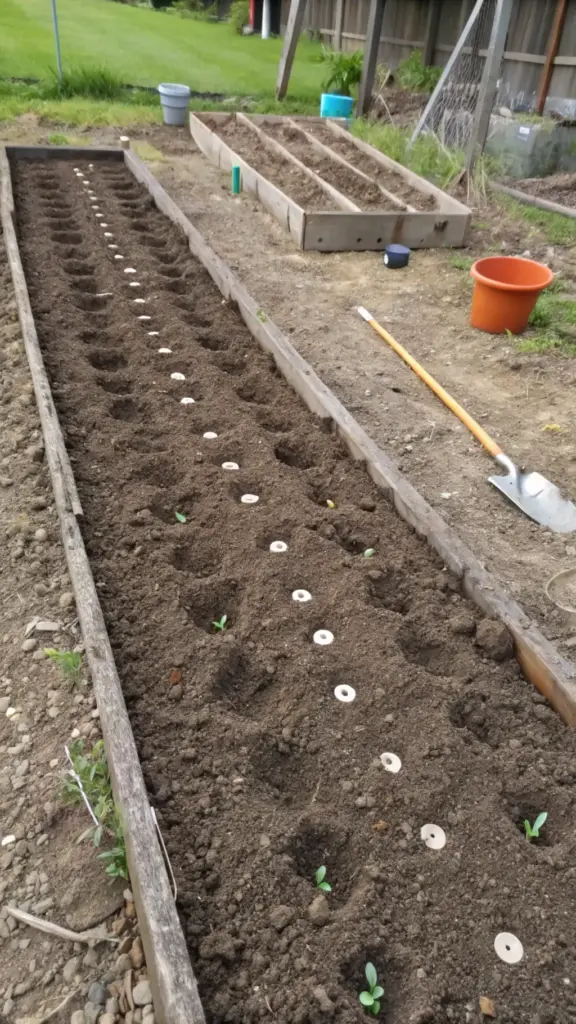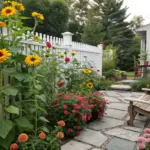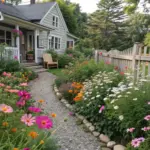Step #5: Plant Your Zinnia Seeds

Let me tell you about my first time planting zinnias – what an adventure that was! After watching countless gardening videos and reading every blog post I could find, I still managed to plant them too deep my first time. But hey, that’s how we learn, right? Now I’ve got it down to a science, and I’m excited to share everything I’ve discovered about getting these beautiful flowers started.
Getting the Depth Just Right
The biggest game-changer for me was learning that zinnia seeds need just the right depth to thrive. Here’s the thing – these seeds are pretty small, and they only need to be planted about ¼ inch deep in the soil. I like to use my pinky finger to make a small indentation – it’s the perfect depth! If you plant them too deep, they’ll struggle to reach the surface, and too shallow means they might dry out or get eaten by birds.
Spacing for Success
When it comes to seed spacing, I learned this the hard way – my first zinnia garden looked like a jungle because I planted everything way too close together! Now I space my seeds about 6 inches apart in rows that are 12 inches apart. This gives them plenty of room to grow into those gorgeous, full plants we’re all aiming for. If you’re direct sowing, you can plant 2-3 seeds per spot and then thin out the weakest seedlings once they’re about 3 inches tall.
Watering Like a Pro
The watering technique for zinnia seeds is crucial – and trust me, I’ve had my share of washouts! Use a gentle spray or a watering can with a rose attachment to avoid displacing the seeds. Keep the soil consistently moist but not waterlogged during germination. I check my seedbed every morning and evening, giving it a light sprinkle whenever the top layer feels dry to the touch.
Perfect Timing
Timing really is everything with zinnias. I’ve found that planting them about 2-3 weeks after the last frost date in spring works best. The soil temperature should be at least 70°F for good germination. In my zone, I actually do several plantings about 3 weeks apart to ensure I have continuous blooms all season long. This succession planting technique has been a total game-changer for my cut flower garden!
Want to know what happens next? Click the “next” button below to discover all about the essential care requirements your zinnia seedlings will need. I’ll share my tried-and-true tips for watering schedules and fertilizing techniques that’ll help your zinnias grow into the showstoppers they’re meant to be. Trust me, you won’t want to miss these game-changing care strategies that took me years to perfect!










GIPHY App Key not set. Please check settings